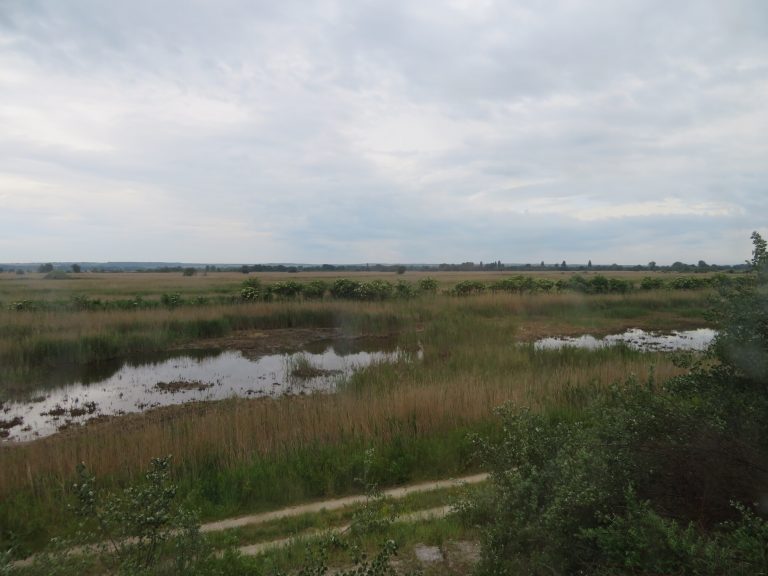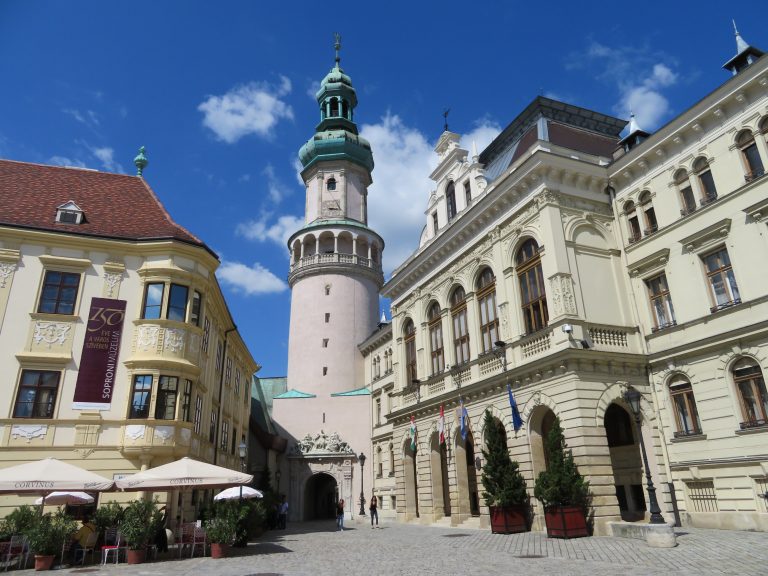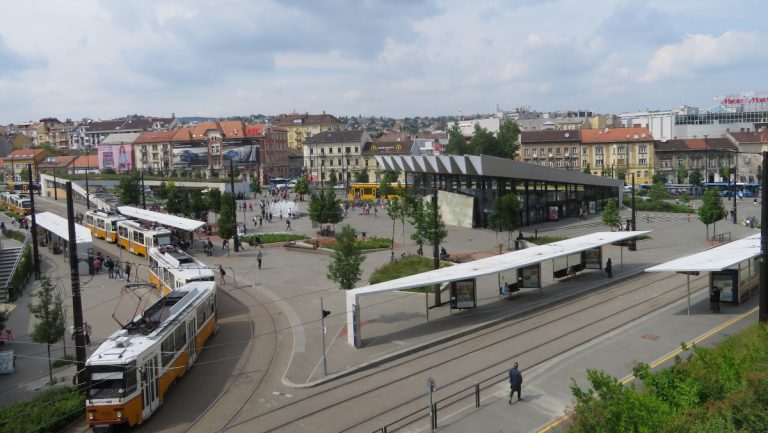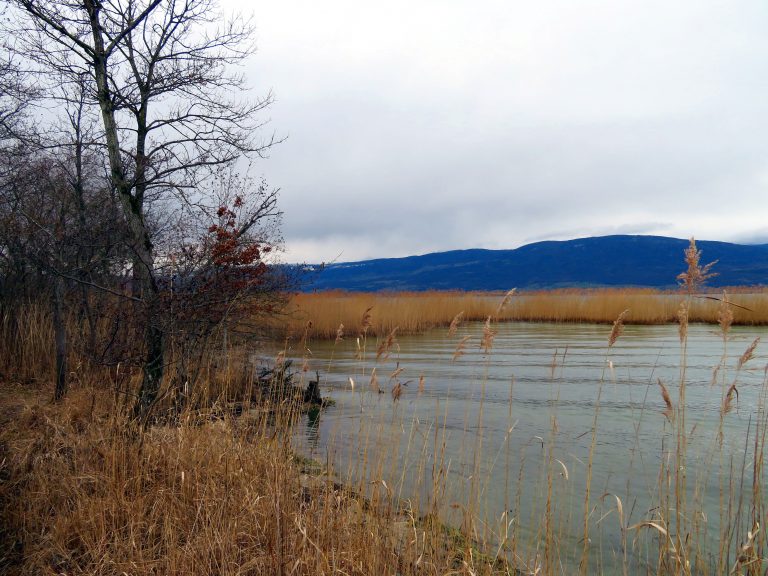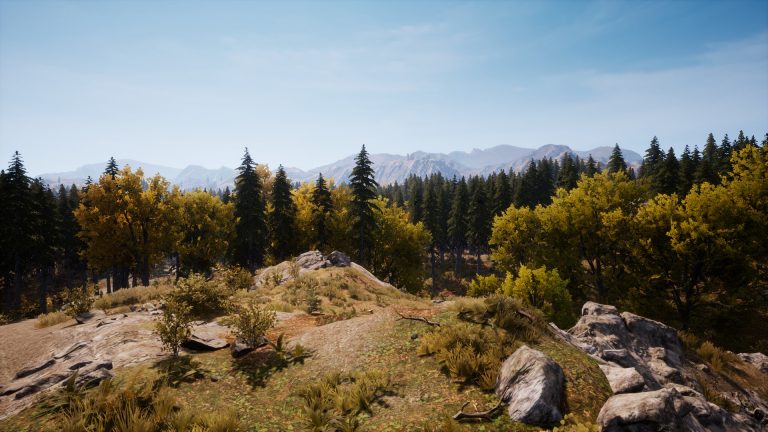Lake Balaton is that long, large lake, a bit bigger than Lake Geneva, which stands out on maps of Hungary, and where the entire Hungarian population comes to spend their summer vacations. It should be noted that with an average depth of around 3.5 meters, the water heats up quickly with the slightest ray of sunshine, making the lake great for swimming for much of the year. Every village has its port, its beach, its fish fry restaurants, the region lives solely off this tourism. And it has been this way for a while; during the Iron Curtain era, both West Germans and East Germans were allowed to vacation there, enabling separated families to reunite. If you’re looking for wild beaches, keep moving: except for a few small marshy patches where two swans and three ducks nest, the entire coastline of the lake is developed! Second homes, developed beaches, hotels probably ten stories high… Lake Balaton is truly the Hungarian Riviera. Do not underestimate the importance of “a magyar tenger,” the Hungarian sea.
It goes without saying that in winter, the region is deserted, except for a few main towns like Keszthely at the western end of Lake Balaton. Besides its beaches, this historic town has some regional importance, an agricultural school, a market, a historic center, and a castle that attracts visitors year-round. It also benefits from its proximity to Hévíz, a spa town located a 10-minute drive northwest, built around a 300-meter diameter thermal lake over 30 meters deep, fed by hot springs with healing properties.
As of the time I am writing to you, Keszthely is served by a train once an hour from Budapest (direct train every other hour), and Hévíz also has direct bus connections from Budapest. I recommend everyone to spend a night or two in the area. Unless you prefer to party all night; in that case, go to Siófok instead.
In short, this part of Lake Balaton, the furthest from Budapest, attracts many Hungarian, German, and Austrian retirees seeking peace and local produce: the entire Zala hinterland supplies the town with good products. However, as you might have inferred from the terms — spa-goers, calm, retirees… — it is not a particularly youthful area. In fact, Zala County, in the 2020s, has the highest average age in Hungary. A 30-year-old has nothing to do there. Even less so a Swiss person. In fact, it doesn’t even exist in the collective unconscious. Even if one learns Hungarian, goes to the market, frequents the same restaurants regularly… they’ll remain an alien. An unidentified wandering object. That’s why I don’t have much to say about Keszthely. I spent a very good year there, after the restrictions related to the “undercooked bat.” Without really managing to make friends locally, I nonetheless had more cordial relationships with a neighbor here, a waiter there… while still remaining a bit of the local ghost. Sometimes, I would go back to see friends in the capital for two nights, 200 km away. Other times, friends from the capital would come to enjoy the lake. Once, I made the trip with Martial, now a young father, to retrieve my things from his place.
Otherwise, apart from working from home, my days were filled with walking, biking, going to the beach, and always composing music for Bards in Exile. There was also a musical improvisation group, but nothing came of it. There were small local festivals too, but generally attended by older people or families, often very young parents with already two children. No village girls looking for a prince charming to take them away, oh the worn-out cliché! Like in all these somewhat rural areas, young adults who can study move to the capital, and those who stay start early: several parents I saw in Keszthely were not older than 25. Twenty-five was also the total number of girls on a dating site, within a 50-kilometer radius around Keszthely, which included two other larger towns.
The apartment of this friend of a friend, Julcsi, was not expensive to rent. But there was a deal. This furnished apartment, right in the center of Keszthely, was for sale because Julcsi used to rent it to vacationers but couldn’t find enough renters to make it profitable. So, she had put it up for sale and offered me to live there until it was sold, with two conditions: first, she would relocate me elsewhere once the sale was completed, and second, I had to take care of her collection of houseplants, because Julcsi’s main residence was under renovation, and she had to stay in Austria to try to get compensation for wrongful dismissal—because this brave lady had refused the mandatory injection against the “undercooked bat”—compensation that could have allowed her to finish the work after endless appeals and legal proceedings. In the meantime, these poor houseplants, which hadn’t asked for anything, were in my care.
A day in 2022 came when the apartment was sold, and the houseplants and I were moved to a new place in Zalakátyú, a village a bit further north (again, a made-up name, and all the following Hungarian village names will be as well). But before getting into that, I shouldn’t forget a detail: at the beginning of summer 2021, when restrictions were still dampening spirits, when injection certificates allowed customers to enter restaurants, etc., it occurred to me: “The friends I left behind in Budapest… All those people on the internet discussion groups… Nikolaï and the other one whose name I’ve forgotten, who tried the rural adventure in Ukraine… Well, here I am in the Hungarian countryside, with my remote work and free time! So, why not do it alone? It’s summer 2021, and there’s nothing to prove that the next winter won’t be six months of lockdown again, that will deliver the final blow to urban life… Maybe, this time, their civilizational collapse is finally here!”
And that’s how, on a whim, I bought a chalet.
Part VIII coming soon.

